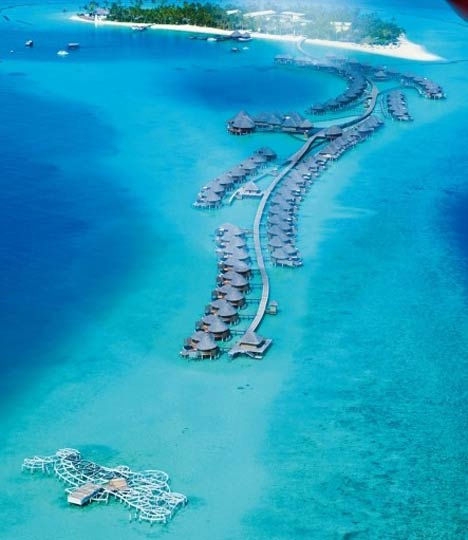
关于颐和园介绍英语作文80词【一】
??和园的介绍说明文相信许多人都写过吧,特别是写作中最基本、最常见的说明文,根据语言风格的不同,说明文可分为平实说明文和生动说明文两大类。怎么样才能写出优秀的说明文呢?下面是小编精心整理的颐和园的`介绍说明文,欢迎大家借鉴与参考,希望对大家有所帮助。
颐和园位于北京市西北郊,距市中心约19公里。它占地290公顷,水面占地220公顷。园内分为宫廷区、前山前湖区、后山后湖区三大景区。共有殿、堂、楼、阁、亭台、水榭3000余间。
颐和园里著名的长廊有700多米长,分成273间。每一间的横槛上都有五彩的画,那是清代画家的作品。长廊两旁栽着清香扑鼻、五颜六色的鲜花。
从长廊向外望去,长寿山上的景色展现在远处:一座八角形的三层建筑耸立在半山腰上,黄色的琉璃瓦在闪闪发光,还有下面一排金碧辉煌的宫殿。那就是佛香殿和排云殿。
正前面,昆明湖静得似镜,绿得似碧玉。昆明湖的中心岛环境优美,是个优雅的好地方,适宜游客休息。昆明湖里有一座石桥,它的桥身有十七个桥洞,叫十七孔桥。桥栏杆上有上百根石柱,柱子上雕刻着小狮子,姿态不一,非常可爱。
颐和园的美丽景色说也说不尽。要是你有时间,就取那儿细细游赏,你一定会被颐和园的美丽景色深深吸引。
关于颐和园介绍英语作文80词【二】
??颐和园英语作文范文The Summer Palace can be divided into two parts: Longevity Hill and Kunming Lake. The whole garden covers an area of 290 hectares, of which three- fourths consists of a lake and rivers. This imperial garden features 3,000 room-units and covers an expanse of 70,000 square meters with more than 100 picturesque spots of interest. The layout of the Summer Palace includes three groups of architectures: palaces where the emperor attended to state affairs, resting palaces of the emperor and empress, and sightseeing areas. Entering the East Gate we will come the office quarters. Entering the East gate we will come to the office quarters. The annex halls on both sides were used for officials on duty.
This is the Gate of Benevolence and Longevity. Above the door there is a plaque bearing the same name in both Chinese and Manchurian characters. The gigantic rock in the foreground is known as Taihu rock, or eroded limestone, quarried in Jiangsu Province and placed here to decorated the garden.
On the marble terrace sits a bronze mythical beast, known as Qilin or Xuanni. It was said to the one of the nine sons of Dragon King. A point of peculiar interest is that it has the head of a dragon, antlers of a deer, the tail of a lion and hooves of an ox, and is covered with a unique skin. IT was considered an auspicious creature that brought peace and prosperity.
This grand hall is the Hall of Benevolence and Longevity. It was built in 1750, and was known as the Hall of Industrious Government. Emperor Qianlong ruled that the halls where monarchs attended to state affairs would be named after them. After the rebuilding of the Summer Palace, the hall was renamed, suggesting that benevolent rulers would enjoy long lives.
The arrangement of the hall has been left untouched. In the middle of the hall stands a throne made of sandalwood and carved with beautiful designs. In the background there is a screen carved with nine frolicking dragons. On either side of the throne there are two big fans made of peacock feathers, two column-shaped incense burners, crane-shaped lanterns and an incense burner assuming the form of Luduan, a mythological animal which was suppose to have the power to prevent fire. The small chambers on eight side were where the Emperor Qianlong and Empress Dowager Cixi rested and met officials on formal occasions.
On the verandah in the foreground of the hall there are bronze statues of dragon and phoenixes which served as incense burners on major occasions. They are hollow and smoke comes through holes on their backs. Also on the veranda are Tai Ping (Peace bronze water vats made during the reign of Emperor Qianlong. As a precaution in case of fire, a fire was lit underneath the vats in the winter to keep the water in them from freezing.
(At the entrance of Garden of Virtuous Harmony
Outside the East Gate–in front of the Hall of benevolence and Longevity- in front of Garden of Virtuous Harmony-in front of the Grand Theater Building- a lakeside walk from the Garden of Virtuous Harmony to the Hall o Jade Ripples- in front of the o Jade Ripples- in front of the Yiyunguan (Chamber of Mortal Being-Hall of happiness and longevity- in front of the Yaoyue (Chamber of Mortal Beings-Hall of Happiness and Longevity-in front of the Yaoyue (Inviting the Moon Gate of the Long Corridor- strolling along the Long Corridor- visiting an exhibition of cultural relics- in front of the Hall of Dispelling Clouds- inside the Hall of Dispelling Clouds- atop the Tower of Buddhist Incense- on a hilltop leading from the back door of the Tower of Buddhist Incense- on a hilltop leading from the back door of the Tower of Buddhist Incense- inside the Garden of Harmonious Interest –outside the south gate to Suzhou Shopping Street- atop the stone bridge inside the Suzhou shopping street –on the road from the south gate of suzhou shopping street- on the road form the south gate of suzhou shopping street to the marble boat- in front of the ruins of the Garden of complete spring –along the lakeside by the marble boat-boating on the Kunming Lake-leaving out through the East Gate.
(Outside the east gate
Ladies and Gentlemen:
Welcome to the Summer Palace. (After the self-introduction of the guide -interpreter I hope this will be an interesting and enjoyable day for you.
During our tour, you will be introduced to time honored historical and cultural traditions, as well as picturesque views and landscapes.
The construction of the Summer Palace first started in 1750. At that time, the Qing Dynasty was in its heyday and China was a powerful Asian country with vast territories. The monarch in power then was Emperor Qianlong. With supreme power and large sums of money, he summoned skillful and ingenious artisans from all over the country to carry out this construction work in honor of his mother's birthday. After 15 years and one seventh of the nation's annual revenue spent, the Garden of Clear Ripples was completed and served as a testimony to China's scientific and technological achievements. In 1860, this vast royal garden was burnt down along with the Yuanming Yuan (Garden of Perfection and Brightness by Angol-French allied forces. In 1888, Empress Dowager Cixi reconstructed the garden on the same site and renamed it the Garden of Nurtured Harmony (Summer Palace. Characterized by its vast scope and rich cultural embodiments, the Summer Palace has become one of the most famous tourist sites in the world.
This is the main entrance to the Summer Palace-the East Gate On top of the eaves of the door there is a plaque bearing a Chinese inscription which means "Garden of Nurtured Harmony", whose calligrapher was Emperor Guangxu. The gate that you are now entering was used exclusively by the emperor, the empress and the queen mother. All others used the side doors.
关于颐和园介绍英语作文80词【三】
他们迈着坚定的步伐,怀着澎湃的激情展示着六年二班中队的特点:团结奋进,友谊热情,活泼健康,积极向上。灿烂的微笑洋溢着他们的热情;嘹亮的口号显示着他们的激情;饱满的神情体现着他们的实力。
六年二班中队的同学们严于律己,自从开学以来连续四周获得了校红旗班级,没有同学违反校规校纪,在同学和老师们的努力下,班级焕发出了夺目的奇光异彩,走在了六年组的先列。
在才艺方面,他们每个都有特长,在学校组织各种才艺比赛时,同学们犹如蛟龙出海,各显神通,有的画画,有的写书法……在我们班前不久举行的班级朗诵会上,同学们大显神通,让同学老师们耳目一新。有的同学钢琴已达到8级之多;有的同学写作获得过国家级荣誉,有的同学的书画已获得全国小学生龙人杯书画大赛奖……总之,六年二班中队是个多才多艺的班集体。
在卫生方面六年二班中队的同学们更是齐心协力,做值日绝对不留角,时刻保持教室内的空气清鲜,定时拖地,捡纸屑。在同学们的`爱护和努力之下,让班级窗明几净,一尘不染。
这些方面还不足以说明六年二班中队同学的优秀,在体育方面他们也是各有千秋。 赛场上,男同学们犹如潇洒的雄鹰,雄姿尽展,使班级获得了一次又一次的荣誉。女同学们也不甘示弱,一个个英姿飒爽,犹如蛟龙出海,尽显女儿的英雄本色。就是这样,使六年二班健儿辈出,在校举办的各项体育活动中,同学们个个都如猛虎下山,胸有成竹,胜券在握。
六年二班中队的同学本着“更高、更快、更强”的体育精神,坚定“友谊第一,比赛第二”的信念,在体育场上写下光辉的一页。让六年二班中队的特点与体育的精神相融合,为六年二班中队争得一份荣誉,添一份光彩!














